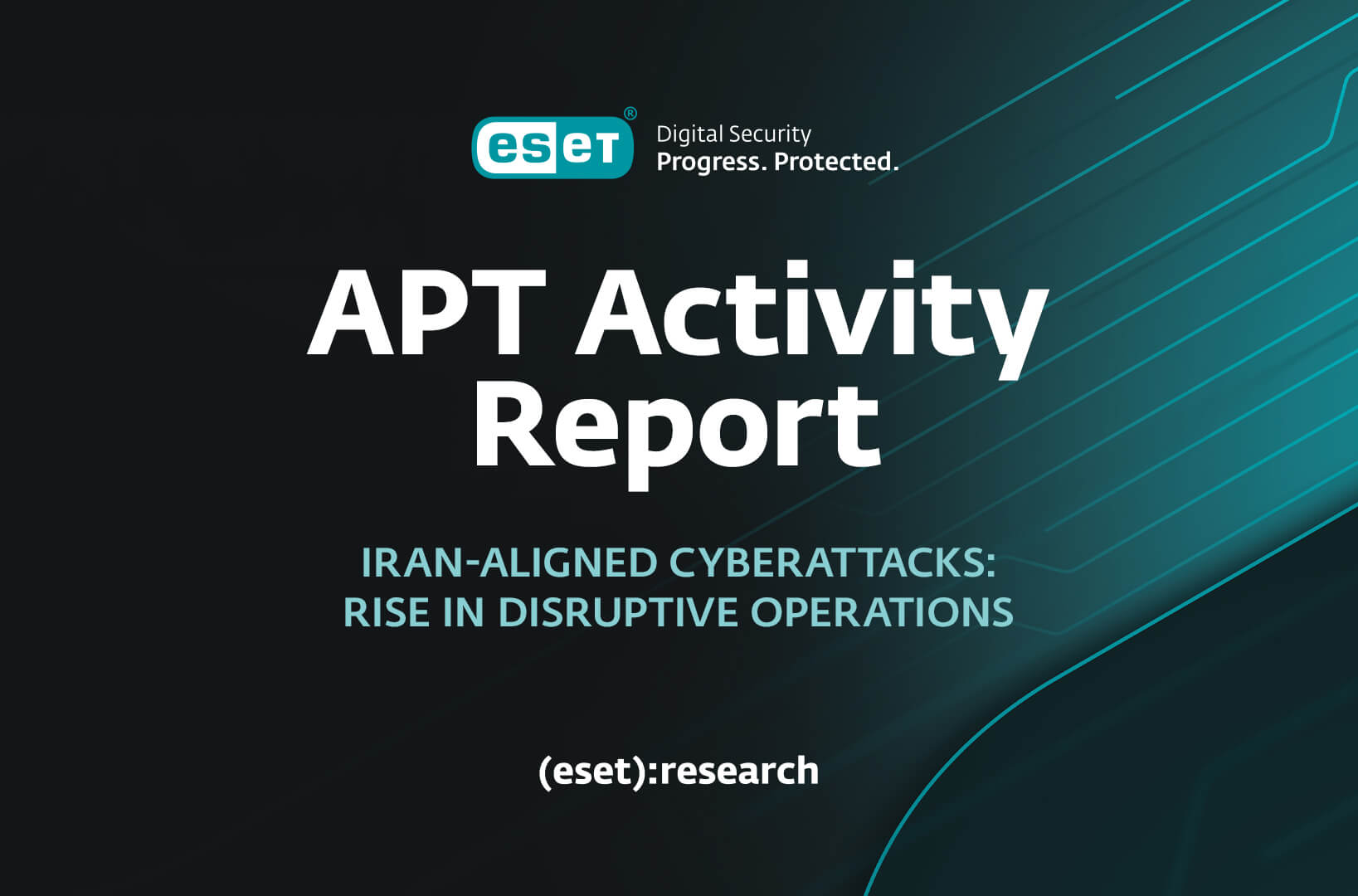
ESET
researchers
tease
apart
MQsTTang,
a
new
backdoor
used
by
Mustang
Panda,
which
communicates
via
the
MQTT
protocol
ESET
researchers
have
analyzed
MQsTTang,
a
new
custom
backdoor
that
we
attribute
to
the
Mustang
Panda
APT
group.
This
backdoor
is
part
of
an
ongoing
campaign
that
we
can
trace
back
to
early
January
2023.
Unlike
most
of
the
group’s
malware,
MQsTTang
doesn’t
seem
to
be
based
on
existing
families
or
publicly
available
projects.
Mustang
Panda
is
known
for
its
customized
Korplug
variants
(also
dubbed
PlugX)
and
elaborate
loading
chains.
In
a
departure
from
the
group’s
usual
tactics,
MQsTTang
has
only
a
single
stage
and
doesn’t
use
any
obfuscation
techniques.
Victimology
We
have
seen
unknown
entities
in
Bulgaria
and
Australia
in
our
telemetry.
We
also
have
information
indicating
that
this
campaign
is
targeting
a
governmental
institution
in
Taiwan.
However,
due
to
the
nature
of
the
decoy
filenames
used,
we
believe
that
political
and
governmental
organizations
in
Europe
and
Asia
are
also
being
targeted.
This
would
also
be
in
line
with
the
targeting
of
the
group’s
other
recent
campaigns.
As
documented
by
fellow
researchers
at
Proofpoint,
Mustang
Panda
has
been
known
to
target
European
governmental
entities
since
at
least
2020
and
has
increased
its
activity
in
Europe
even
further,
since
Russia’s
invasion
of
Ukraine.
Figure
1
shows
our
view
of
the
targeting
for
this
campaign.
Attribution
We
attribute
this
new
backdoor
and
the
campaign
to
Mustang
Panda
with
high
confidence
based
on
the
following
indicators.
We
found
archives
containing
samples
of
MQsTTang
in
two
GitHub
repositories
belonging
to
the
user
YanNaingOo0072022.
Another
GitHub
repository
of
the
same
user
was
used
in
a
previous
Mustang
Panda
campaign
described
by
Avast
in
a
December
2022
blogpost.
One
of
the
servers
used
in
the
current
campaign
was
running
a
publicly
accessible
anonymous
FTP
server
that
seems
to
be
used
to
stage
tools
and
payloads.
In
the
/pub/god
directory
of
this
server
there
are
multiple
Korplug
loaders,
archives,
and
tools
that
were
used
in
previous
Mustang
Panda
campaigns.
This
is
the
same
directory
that
was
used
by
the
stager
described
in
the
aforementioned
Avast
blogpost.
This
server
also
had
a
/pub/gd
directory,
which
was
another
path
used
in
that
campaign.
Some
of
the
infrastructure
used
in
this
campaign
also
matches
the
network
fingerprint
of
previously
known
Mustang
Panda
servers.
Technical
analysis
MQsTTang
is
a
barebones
backdoor
that
allows
the
attacker
to
execute
arbitrary
commands
on
a
victim’s
machine
and
get
the
output.
Even
so,
it
does
present
some
interesting
characteristics.
Chief
among
these
is
its
use
of
the
MQTT
protocol
for
C&C
communication.
MQTT
is
typically
used
for
communication
between
IoT
devices
and
controllers,
and
the
protocol
hasn’t
been
used
in
many
publicly
documented
malware
families.
One
such
example
is
Chrysaor,
also
known
as
Pegasus
for
Android.
From
an
attacker’s
perspective,
one
of
MQTT’s
benefits
is
that
it
hides
the
rest
of
their
infrastructure
behind
a
broker.
Thus,
the
compromised
machine
never
communicates
directly
with
the
C&C
server.
As
seen
in
Figure
2,
this
capability
is
achieved
by
using
the
open
source
QMQTT
library.
This
library
depends
on
the
Qt
framework,
a
large
part
of
which
is
statically
linked
in
the
malware.
Using
the
Qt
framework
for
malware
development
is
also
fairly
uncommon.
Lazarus’s
MagicRAT
is
one
of
the
rare
recently
documented
examples.
MQsTTang
is
distributed
in
RAR
archives
which
only
contain
a
single
executable.
These
executables
usually
have
names
related
to
Diplomacy
and
passports
such
as:
-
CVs
Amb
Officer
PASSPORT
Ministry
Of
Foreign
Affairs.exe -
Documents
members
of
delegation
diplomatic
from
Germany.Exe -
PDF_Passport
and
CVs
of
diplomatic
members
from
Tokyo
of
JAPAN.eXE -
Note
No.18-NG-23
from
Embassy
of
Japan.exe
These
archives
are
hosted
on
a
web
server
with
no
associated
domain
name.
This
fact,
along
with
the
filenames,
leads
us
to
believe
that
the
malware
is
spread
via
spearphishing.
So
far,
we
have
only
observed
a
few
samples.
Besides
variations
in
some
constants
and
hardcoded
strings,
the
samples
are
remarkably
similar.
The
only
notable
change
is
the
addition
of
some
anti-analysis
techniques
in
the
latest
versions.
The
first
of
these
consists
of
using
the
CreateToolhelp32Snapshot
Windows
API
function
to
iterate
through
running
processes
and
look
for
the
following
known
debuggers
and
monitoring
tools.
-
cheatengine-x86_64.exe -
ollydbg.exe -
ida.exe -
ida64.exe -
radare2.exe -
x64dbg.exe -
procmon.exe -
procmon64.exe -
procexp.exe -
processhacker.exe -
pestudio.exe -
systracerx32.exe -
fiddler.exe -
tcpview.exe
Note
that,
while
the
malware
is
a
32-bit
executable,
it
only
checks
for
the
presence
of
x64dbg
and
not
its
32-bit
counterpart,
x32dbg.
The
second
technique
uses
the
FindWindowW
Windows
API
to
look
for
the
following
Window
Classes
and
Titles
used
by
known
analysis
tools:
-
PROCMON_WINDOW_CLASS -
OLLYDBG -
WinDbgFrameClass -
OllyDbg
–
[CPU] -
Immunity
Debugger
–
[CPU]
When
executed
directly,
the
malware
will
launch
a
copy
of
itself
with
1
as
a
command
line
argument.
This
is
repeated
by
the
new
process,
with
the
argument
being
incremented
by
1
on
every
run.
When
this
argument
hits
specific
values,
certain
tasks
will
be
executed.
Note
that
the
exact
values
vary
between
samples;
the
ones
mentioned
below
correspond
to
the
sample
with
SHA-1
02D95E0C369B08248BFFAAC8607BBA119D83B95B.
However,
the
tasks
themselves
and
the
order
in
which
they
are
executed
is
constant.
Figure
3
shows
an
overview
of
this
behavior
along
with
the
tasks
that
are
executed
when
the
malware
is
first
run.
Table
1
contains
a
list
of
the
tasks
and
the
value
at
which
each
of
them
is
executed.
We
will
describe
them
in
further
detail
in
the
upcoming
paragraphs.
Table
1.
Tasks
executed
by
the
backdoor
|
Task number |
Argument value |
Task description |
|---|---|---|
| 1 |
5 |
Start C&C communication. |
| 2 |
9 |
Create copy and launch. |
| 3 |
32 |
Create persistence copy. |
| 4 |
119 |
Establish persistence. |
| 5 |
148 |
Stop recursive execution. |
If
any
analysis
tool
or
debugger
is
detected
using
the
techniques
we
described
previously,
the
behavior
of
task
1
is
altered
and
tasks
2,
3,
and
4
are
skipped
entirely.
Task
1:
C&C
communication
As
was
previously
mentioned,
MQsTTang
communicates
with
its
C&C
server
over
the
MQTT
protocol.
All
observed
samples
use
3.228.54.173
as
broker.
This
server
is
a
public
broker
operated
by
EMQX,
who
also
happen
to
be
the
maintainers
of
the
QMQTT
library.
This
could
be
a
way
to
make
the
network
traffic
seem
legitimate
and
to
hide
Mustang
Panda’s
own
infrastructure.
Using
this
public
broker
also
provides
resiliency;
the
service
is
unlikely
to
be
taken
down
because
of
its
many
legitimate
users
and,
even
if
the
current
C&C
servers
are
banned
or
taken
down,
Mustang
Panda
could
spin
up
new
ones
and
use
the
same
MQTT
topics
without
disrupting
MQsTTang’s
operation.
However,
this
campaign
could
also
be
a
test
case
by
Mustang
Panda
before
deciding
whether
to
invest
the
time
and
resources
to
set
up
their
own
broker.
This
is
supported
by
the
low
number
of
samples
we’ve
observed
and
the
very
simple
nature
of
MQsTTang.
As
shown
in
Figure
4,
the
malware
and
C&C
server
use
two
MQTT
topics
for
their
communication.
The
first
one,
iot/server2,
is
used
for
communication
from
the
client
to
the
server.
The
second
one
is
used
for
communication
from
the
server
to
the
client.
It
follows
the
format
iot/v2/<Unique
ID>
where
<Unique
ID>
is
generated
by
taking
the
last
8
bytes,
in
hex
form,
of
a
UUID.
If
any
analysis
tool
is
detected,
server2
and
v2
are
respectively
replaced
with
server0
and
v0.
This
is
likely
in
order
to
avoid
tipping
off
defenders
by
entirely
aborting
the
malware’s
execution
early.
All
communication
between
the
server
and
the
client
uses
the
same
encoding
scheme.
The
MQTT
message’s
payload
is
a
JSON
object
with
a
single
attribute
named
msg.
To
generate
the
value
of
this
attribute,
the
actual
content
is
first
base64
encoded,
then
XORed
with
the
hardcoded
string
nasa,
and
base64
encoded
again.
We
will
describe
the
exact
format
of
these
payloads
in
the
relevant
sections.
Upon
first
connecting
to
the
broker,
the
malware
subscribes
to
its
unique
topic.
Then,
and
every
30
seconds
thereafter,
the
client
publishes
a
KeepAlive
message
to
the
server’s
topic.
The
content
of
this
message
is
a
JSON
object
with
the
following
format:
|
|
When
the
server
wants
to
issue
a
command,
it
publishes
a
message
to
the
client’s
unique
topic.
The
plaintext
content
of
this
message
is
simply
the
command
to
be
executed.
As
shown
in
Figure
5,
the
client
executes
the
received
command
using
QProcess::startCommand
from
the
Qt
framework.
The
output,
obtained
using
QProcess::readAllStandardOutput,
is
then
sent
back
in
a
JSON
object
with
the
following
format:
|
|
Since
only
the
content
of
standard
output
is
sent
back,
the
server
will
not
receive
errors
or
warnings.
From
the
server’s
point
of
view,
a
failed
command
is
thus
indistinguishable
from
a
command
that
simply
produces
no
output
unless
some
sort
of
redirection
is
performed.
Tasks
2
and
3:
Copying
the
malware
The
second
and
third
tasks
are
fairly
similar
to
each
other.
They
copy
the
malware’s
executable
to
a
hardcoded
path;
c:userspublicvdump.exe
and
c:userspublicvcall.exe
respectively.
The
filenames
used
are
different
for
each
sample,
but
they
are
always
located
in
the
C:userspublic
directory.
In
the
second
task,
the
newly
created
copy
is
then
launched
with
the
command
line
argument
97.
Task
4:
Establishing
persistence
Persistence
is
established
by
the
fourth
task,
which
creates
a
new
value
qvlc
set
to
c:userspublicvcall.exe
under
the
HKCUSoftwareMicrosoftWindowsCurrentVersionRun
registry
key.
This
will
cause
the
malware
to
be
executed
on
startup.
When
MQsTTang
is
executed
on
startup
as
c:userspublicvcall.exe,
only
the
C&C
communication
task
is
executed.
Conclusion
The
Mustang
Panda
campaign
described
in
this
article
is
ongoing
as
of
this
writing.
The
victimology
is
unclear,
but
the
decoy
filenames
are
in
line
with
the
group’s
other
campaigns
that
target
European
political
entities.
This
new
MQsTTang
backdoor
provides
a
kind
of
remote
shell
without
any
of
the
bells
and
whistles
associated
with
the
group’s
other
malware
families.
However,
it
shows
that
Mustang
Panda
is
exploring
new
technology
stacks
for
its
tools.
It
remains
to
be
seen
whether
this
backdoor
will
become
a
recurring
part
of
the
group’s
arsenal,
but
it
is
one
more
example
of
the
group’s
fast
development
and
deployment
cycle.
ESET
Research
offers
private
APT
intelligence
reports
and
data
feeds.
For
any
inquiries
about
this
service,
visit
the ESET
Threat
Intelligence page.
IoCs
Files
| SHA-1 | Filename | Detection | Description |
|---|---|---|---|
|
A1C660D31518C8AFAA6973714DE30F3D576B68FC |
CVs Amb.rar |
Win32/Agent.AFBI |
RAR archive used to distribute MQsTTang backdoor. |
|
430C2EF474C7710345B410F49DF853BDEAFBDD78 |
CVs Amb Officer PASSPORT Ministry Of Foreign Affairs.exe |
Win32/Agent.AFBI |
MQsTTang backdoor. |
|
F1A8BF83A410B99EF0E7FDF7BA02B543B9F0E66C |
Documents.rar |
Win32/Agent.AFBI |
RAR archive used to distribute MQsTTang backdoor. |
|
02D95E0C369B08248BFFAAC8607BBA119D83B95B |
PDF_Passport and CVs of diplomatic members from Tokyo of JAPAN.eXE |
Win32/Agent.AFBI |
MQsTTang backdoor. |
|
0EA5D10399524C189A197A847B8108AA8070F1B1 |
Documents members of delegation diplomatic from Germany.Exe |
Win32/Agent.AFBI |
MQsTTang backdoor. |
|
982CCAF1CB84F6E44E9296C7A1DDE2CE6A09D7BB |
Documents.rar |
Win32/Agent.AFBI |
RAR archive used to distribute MQsTTang backdoor. |
|
740C8492DDA786E2231A46BFC422A2720DB0279A |
23 from Embassy of Japan.exe |
Win32/Agent.AFBI |
MQsTTang backdoor. |
|
AB01E099872A094DC779890171A11764DE8B4360 |
BoomerangLib.dll |
Win32/Korplug.TH |
Known Mustang Panda Korplug loader. |
|
61A2D34625706F17221C1110D36A435438BC0665 |
breakpad.dll |
Win32/Korplug.UB |
Known Mustang Panda Korplug loader. |
|
30277F3284BCEEF0ADC5E9D45B66897FA8828BFD |
coreclr.dll |
Win32/Agent.ADMW |
Known Mustang Panda Korplug loader. |
|
BEE0B741142A9C392E05E0443AAE1FA41EF512D6 |
HPCustPartUI.dll |
Win32/Korplug.UB |
Known Mustang Panda Korplug loader. |
|
F6F3343F64536BF98DE7E287A7419352BF94EB93 |
HPCustPartUI.dll |
Win32/Korplug.UB |
Known Mustang Panda Korplug loader. |
|
F848C4F3B9D7F3FE1DB3847370F8EEFAA9BF60F1 |
libcef.dll |
Win32/Korplug.TX |
Known Mustang Panda Korplug loader. |
Network
| IP | Domain |
Hosting provider |
First seen |
Details |
|---|---|---|---|---|
|
3.228.54.173 |
broker.emqx.io |
Amazon.com, Inc. |
2020-03-26 |
Legitimate public MQTT broker. |
|
80.85.156[.]151 |
N/A |
Chelyabinsk-Signal LLC |
2023-01-05 |
MQsTTang delivery server. |
|
80.85.157[.]3 |
N/A |
Chelyabinsk-Signal LLC |
2023-01-16 |
MQsTTang delivery server. |
|
185.144.31[.]86 |
N/A |
Abuse-C Role |
2023-01-22 |
MQsTTang delivery server. |
Github
repositories
-
https://raw.githubusercontent[.]com/YanNaingOo0072022/14/main/Documents.rar -
https://raw.githubusercontent[.]com/YanNaingOo0072022/ee/main/CVs
Amb.rar
MITRE
ATT&CK
techniques
This
table
was
built
using
version
12
of
the
MITRE
ATT&CK
framework.
| Tactic | ID | Name | Description |
|---|---|---|---|
|
Resource Development |
T1583.003 |
Acquire Infrastructure: Virtual Private Server |
Some servers used in the campaign are on shared hosting. |
|
T1583.004 |
Acquire Infrastructure: Server |
Some servers used in the campaign seem to be exclusive to Mustang Panda. |
|
|
T1587.001 |
Develop Capabilities: Malware |
MQsTTang is a custom backdoor, probably developed by Mustang Panda. |
|
|
T1588.002 |
Obtain Capabilities: Tool |
Multiple legitimate and open- source tools, including psexec, ps, curl, and plink, were found on the staging server. |
|
|
T1608.001 |
Stage Capabilities: Upload Malware |
MQsTTang was uploaded to the web server for distribution. |
|
|
T1608.002 |
Stage Capabilities: Upload Tool |
Multiple tools were uploaded to an FTP server. |
|
|
Initial Access |
T1566.002 |
Phishing: Spearphishing Link |
MQsTTang is distributed via spearphishing links to a malicious file on an attacker-controlled web server. |
| Execution |
T1106 |
Native API |
MQsTTang uses the QProcess class from the Qt framework to execute commands. |
|
T1204.002 |
User Execution: Malicious File |
MQsTTang relies on the user to execute the downloaded malicious file. |
|
| Persistence |
T1547.001 |
Boot or Logon Autostart Execution: Registry Run Keys / Startup Folder |
MQsTTang persists by creating a registry Run key. |
|
Defense Evasion |
T1036.004 |
Masquerading: Masquerade Task or Service |
In most samples, the registry key is created with the name qvlc. This matches the name of a legitimate executable used by VLC. |
|
T1036.005 |
Masquerading: Match Legitimate Name or Location |
When creating copies, MQsTTang uses filenames of legitimate programs. |
|
|
T1480 |
Execution Guardrails |
MQsTTang checks the paths it is executed from to determine which tasks to execute. |
|
|
T1622 |
Debugger Evasion |
MQsTTang detects running debuggers and alters its behavior if any are found to be present. |
|
|
Command and Control |
T1071 |
Application Layer Protocol |
MQsTTang communicates with its C&C server using the MQTT protocol. |
|
T1102.002 |
Web Service: Bidirectional Communication |
MQsTTang uses a legitimate public MQTT broker. |
|
|
T1132.001 |
Data Encoding: Standard Encoding |
The content of the messages between the malware and server is base64 encoded. |
|
|
T1573.001 |
Encrypted Channel: Symmetric Cryptography |
The content of the messages between the malware and server is encrypted using a repeating XOR key. |
|
| Exfiltration |
T1041 |
Exfiltration Over C2 Channel |
The output of executed commands is sent back to the server using the same protocol. |












